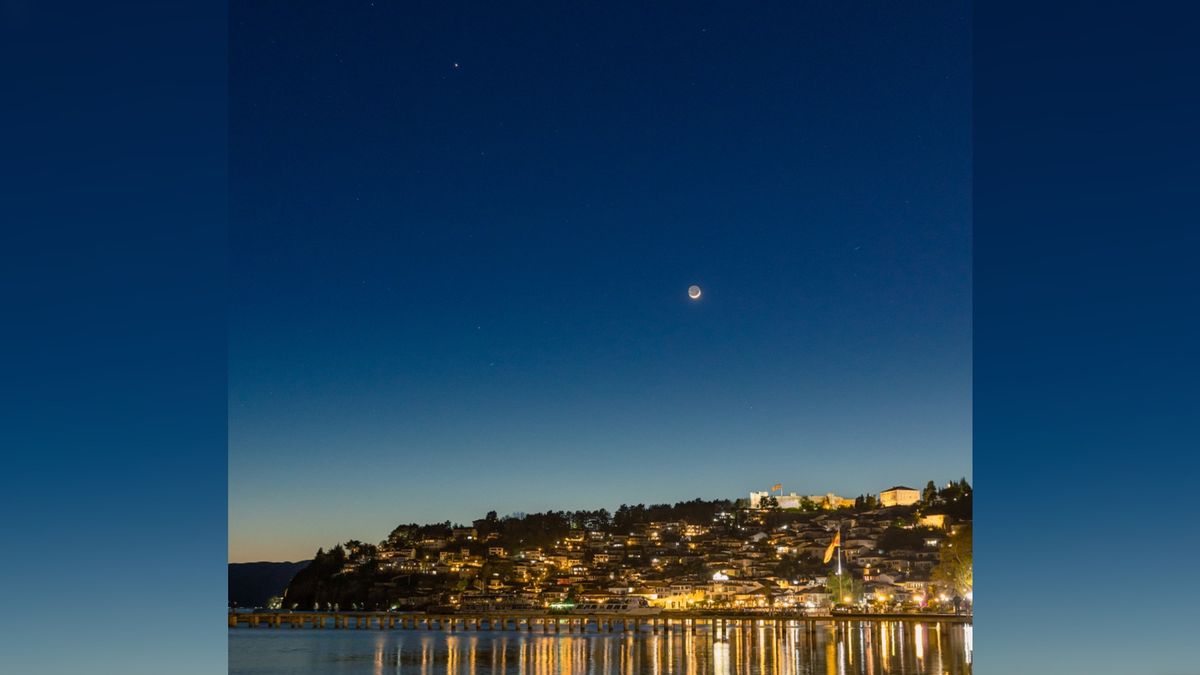Sign up for CNN’s Wonder Theory science newsletter. Explore the universe with news on fascinating discoveries, scientific advancements and more.
The Eta Aquariid meteor shower is about to reach its peak — and you’ll need to get up early to see this celestial show. However, it’s the last meteor shower until late July, and is considered to be one of the best annual showers in the Southern Hemisphere, according to NASA.
While experts differ on the exact peak of this meteor shower, they agree that the best times to view it are in the early morning hours before dawn on Sunday, Monday and Tuesday, according to EarthSky and the American Meteor Society.
On Tuesday, the moon will set by 3 a.m. in any time zone, providing dark skies for optimal viewing, according to NASA.
Those watching the sky in the Northern Hemisphere can expect to see about 10 to 20 meteors per hour between 2 a.m. and 4 a.m., experts at the American Meteor Society said. But sky-gazers in the southern half of the US and the Southern Hemisphere could see many more, EarthSky shared.
The Eta Aquariid shower produces swift meteors with persistent, visible trains streaking behind them that can linger for seconds after the meteors zip by, but few bright fireballs, according to the American Meteor Society.
The Eta Aquariid meteor shower can be seen over Ratnapura, Sri Lanka, on May 5, 2024. - Thilina Kaluthotage/NurPhoto/Getty Images
The source of the Eta Aquariid meteor shower is Halley’s comet. Earth crosses the comet’s orbital path each spring between April and May, causing small grains of rock and dust shed by the comet to strike our planet’s atmosphere and create a dazzling meteor display. It happens again in October, resulting in the Orionid meteor shower.
Halley’s comet was last visible streaking across Earth’s night sky in 1986, and it will swing back by in 2061 as it travels on a 76-year orbit around the sun.
The meteors appear to be coming from the northeastern part of the Aquarius constellation, which contributes to the name of the shower.
While the meteors seem as though they’re originating from the faint star Eta Aquarii, it’s 170 light-years away. The meteors actually burn up just 60 miles (100 kilometers) above Earth’s surface, according to EarthSky.
If you live in an urban area and want to see the Eta Aquariids, you might want to drive to a place that isn’t littered with city lights that will obstruct your view. The darker the skies, the more likely you are to see an increased number of meteors.
Find an open area with a wide view of the sky. Make sure you have a chair or blanket so you can look straight up. And give your eyes about 20 to 30 minutes to adjust to the darkness — without looking at your phone — so meteors are easier to spot.
Upcoming meteor showers
Here are peak dates for other meteor showers to anticipate this year, according to the American Meteor Society and EarthSky.
Southern Delta Aquariids: July 29–30
Alpha Capricornids: July 29–30
Perseids: August 12–13
Draconids: October 8–9
Orionids: October 22–23
Southern Taurids: November 3–4
Northern Taurids: November 8–9
Leonids: November 16–17
Geminids: December 12–13
Ursids: December 21–22
For more CNN news and newsletters create an account at CNN.com
.png)
 German (DE)
German (DE)  English (US)
English (US)  Spanish (ES)
Spanish (ES)  French (FR)
French (FR)  Hindi (IN)
Hindi (IN)  Italian (IT)
Italian (IT)  Russian (RU)
Russian (RU) 








Comments